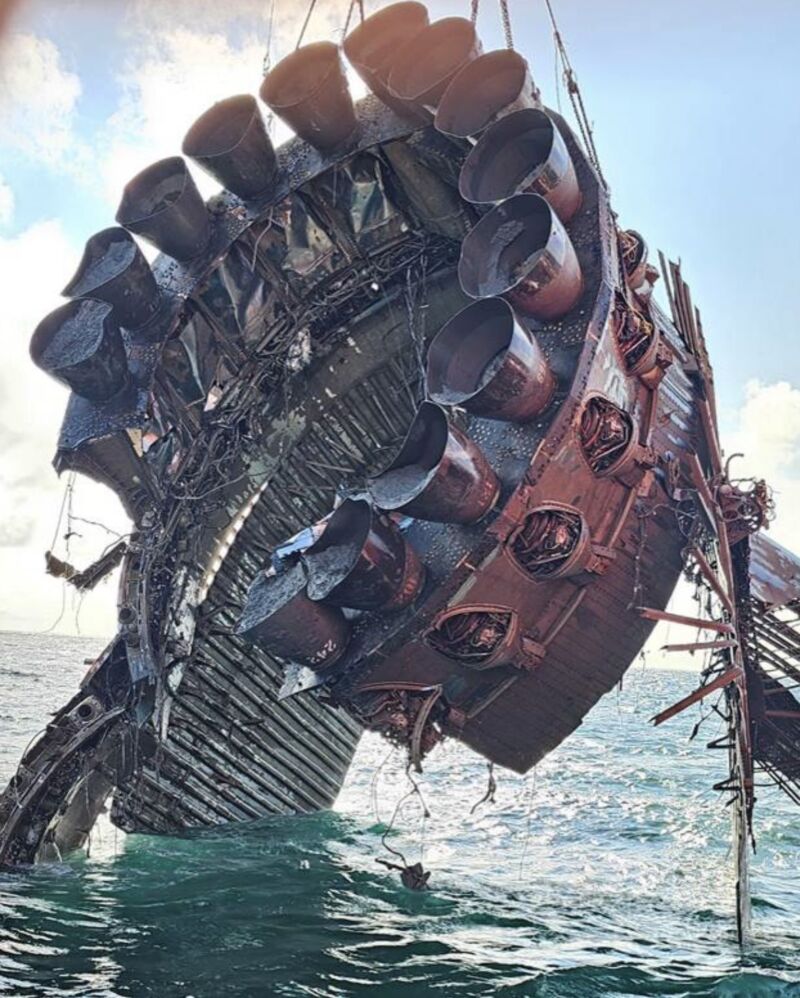
Welcome to Edition 7.13 of the Rocket Report! While regulators hold up the next flight of the world’s largest rocket, there’s a lot of news this week in the small launch sector—some good, some bad. Meanwhile, Hurricane Helene has delayed the launch of the next crew to the International Space Station.
As always, we welcome reader submissions. If you don’t want to miss an issue, please subscribe using the box below (the form will not appear on AMP-enabled versions of the site). Each report will include information on small-, medium-, and heavy-lift rockets as well as a quick look ahead at the next three launches on the calendar.

A Chinese rocket narrowly misses a landing. A Chinese space startup conducted what it called a “high-altitude” test flight of its Nebula-1 rocket on Sunday, launching the vehicle to an altitude of about 5 kilometers or so before attempting to land it back at the Ejin Banner Spaceport in Inner Mongolia. The test flight went well for about two and a half minutes before the vehicle experienced a problem just before landing and erupted into a fireball, Ars reports. The company said it learned a lot from the test, completing 10 of its 11 major objectives. It plans to attempt another high-altitude test flight as early as November. Deep Blue Aerospace is one of several Chinese aerospace startups seeking to emulate the success that US-based SpaceX has had with vertical takeoff and vertical landing of rockets.
The video is amazing … This is not the first vertical rocket landing test by a Chinese company, but what sets Deep Blue Aerospace apart from its competitors is its transparency. Within hours the company released a detailed statement about the test flight, its objectives, and a preliminary review of what went wrong. In addition to this statement, the company released images and video—including that from nearby drones—that included the fiery landing attempt and its aftermath.
Russia’s “super weapon” failed spectacularly. Late last week, Russia’s military planned to launch a Sarmat intercontinental ballistic missile (ICBM) on a test flight from the Plesetsk Cosmodrome. Imagery captured over the weekend from commercial satellites suggests the missile exploded before or during launch, Ars reports. This is at least the second time an RS-28 Sarmat missile has failed in less than two years, dealing a blow to the country’s nuclear forces days after the head of the Russian legislature issued a veiled threat to use the missile against Europe if Western allies approved Ukraine’s use of long-range weapons against Russia.
The secret is out … Before the rise of the commercial space industry, knowledge of an accident like this one would be restricted to a small number of government officials. Commercial satellite imagery collected by Maxar and Planet show before-and-after views of the Sarmat missile silo at Plesetsk, a military base about 500 miles (800 kilometers) north of Moscow. The view from one of Maxar’s imaging satellites Saturday revealed unmistakable damage at the launch site, with a large crater centered on the opening to the underground silo. The crater is roughly 200 feet (62 meters) wide, according to George Barros, a Russia and geospatial intelligence analyst at the Institute for the Study of War. “Extensive damage in and around the launch pad can be seen which suggests that the missile exploded shortly after ignition or launch,” Barros wrote on X.
Wall Street pessimistic about Virgin Galactic. Morgan Stanley has significantly reduced its price target for Virgin Galactic, reflecting a more pessimistic outlook on the company’s future, Investing.com reports. The investment bank slashed its target for the stock from $35 per share, citing ongoing challenges and a lack of near-term catalysts for the stock. The drastic price target adjustment comes amid Virgin Galactic’s commercial flight hiatus, which is expected to last until approximately 2026, when the company aims to have its next-generation Delta-class spaceships ready to fly to suborbital space.
At a crossroads … Virgin Galactic went public through a SPAC merger in 2019, but the company’s stock price has been on a precipitous decline. Year to date, Virgin Galactic’s stock price has fallen more than 87 percent and currently sits at roughly $6, not far off from Morgan Stanley’s price target. Virgin Galactic doesn’t have many near-term prospects for revenue after retiring its VSS Unity spaceplane in June.
Isar Aerospace confirms hot-fire testing is underway. German rocket builder Isar Aerospace is “currently performing hot fire tests of the first and second stages” that will be used for the inaugural flight of its Spectrum rocket, European Spaceflight reports. Founded in 2018, Isar’s two-stage Spectrum rocket is designed to deliver payloads of up to 1,000 kilograms in low-Earth orbit. Isar has kept quiet about its technical progress, but a company spokesperson said all components for the first Spectrum rocket have arrived at Andøya Spaceport in Norway and “final preparations for the first test flight of Spectrum are in full swing.”
Launch by the end of the year? … European Spaceflight reported Isar’s spokesperson did not specify a schedule for the first flight of the Spectrum rocket, but at a space conference earlier this month, the company’s chief operating officer said teams were targeting the launch before the end of this year. Isar has a shot at becoming the first of a new wave of European launch startups to make an orbital launch attempt after another German company, Rocket Factory Augsburg, suffered a setback during hotfire testing in Scotland. (submitted by Ken the Bin)
Firefly wins NASA launch contract. Firefly Aerospace won a contract to launch QuickSounder, a prototype for the National Oceanic and Atmospheric Administration’s next generation of environmental satellites in low-Earth orbit, Space News reports. NASA awarded the contract to Texas-based Firefly on behalf of NOAA through the Venture-Class Acquisition of Dedicated and Rideshare (VADR) launch services contract. Through VADR, NASA awards fixed-price contracts for launches of small satellites. This is pretty big news for Firefly, and it’s the company’s first VADR launch contract award from NASA. Previously, NASA awarded VADR launch contracts to SpaceX, Rocket Lab, Blue Origin, and Phantom Space.
Paving the way … The QuickSounder mission is the first project in NOAA’s Near Earth Orbit Network and will be a pathfinder for future polar-orbiting weather satellites. Southwest Research Institute is building the spacecraft, which will host NOAA’s Advanced Technology Microwave Sounder Engineering Development Unit. The launch of the QuickSounder mission is scheduled for no earlier than February 2026. (submitted by Ken the Bin and EllPeaTea)

